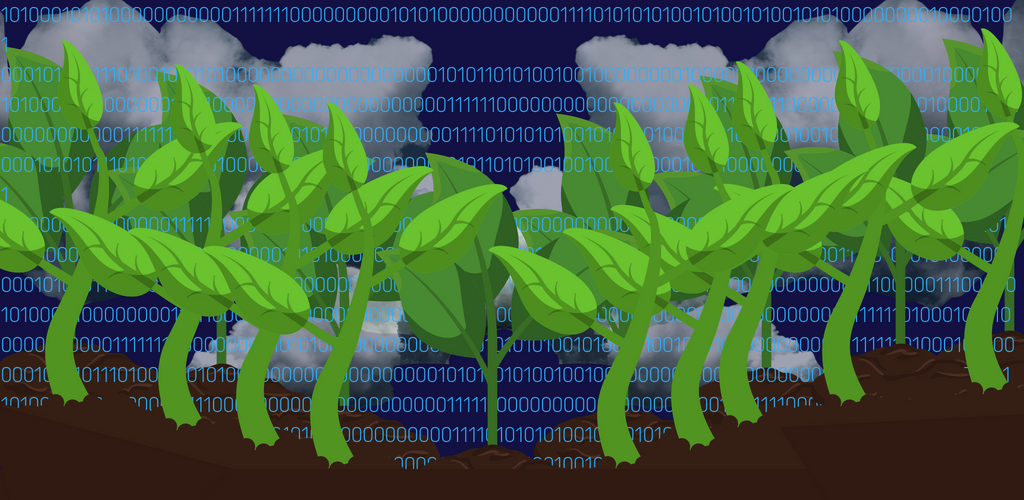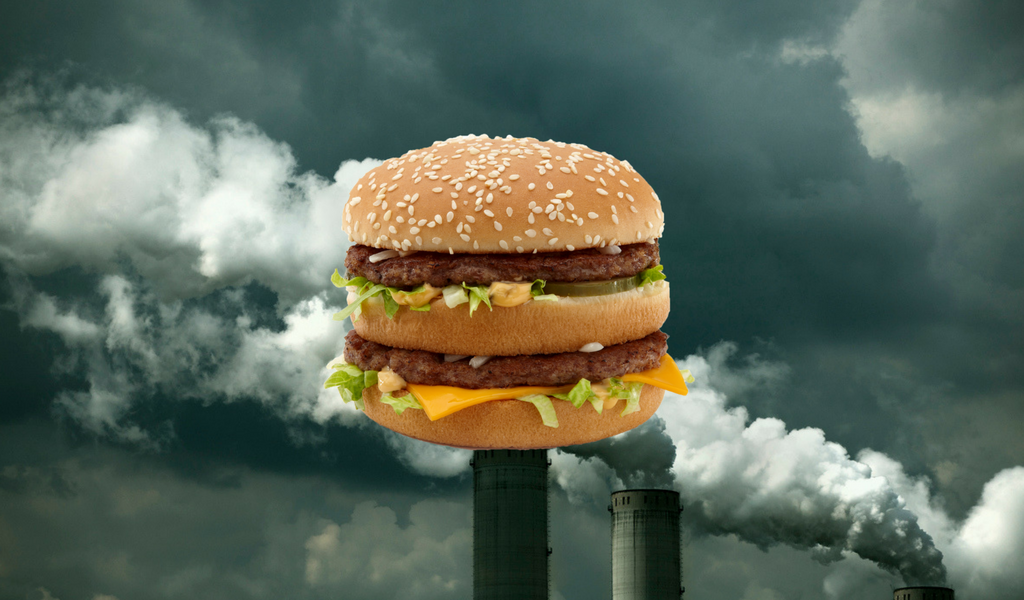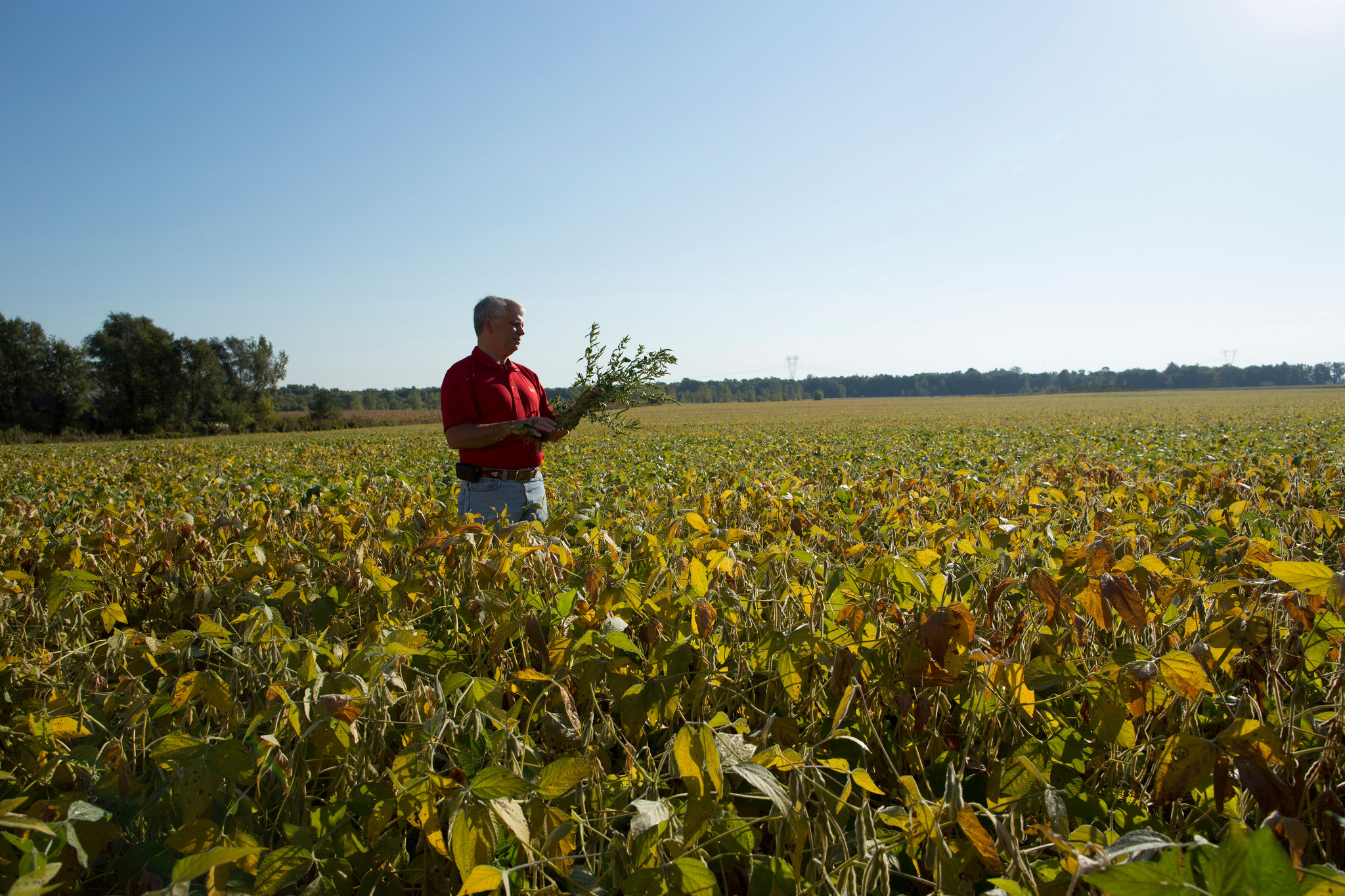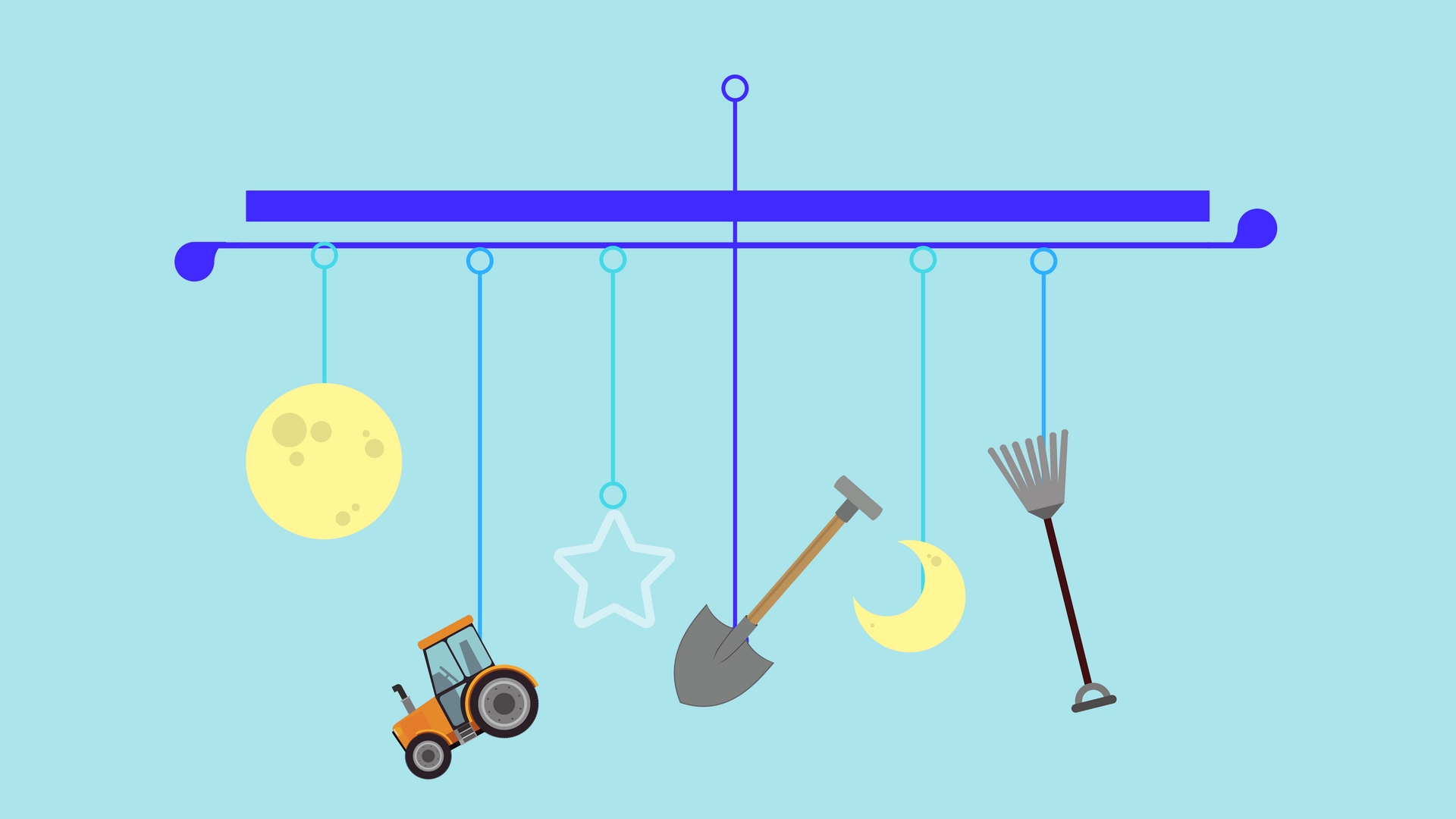
When the price of Bitcoin skyrocketed at the end of 2017, analysts crunched the numbers and concluded that the cryptocurrency was set to consume the entire global energy supply by the end of 2020. “Mining” Bitcoin involves solving increasingly complex mathematical equations that secure the network in exchange for newly-minted cryptocurrency—which incidentally requires lots of energy. Huge server farms have popped up around the world for the express purpose of generating the virtual cash, from China to upstate New York, where one town put a moratorium on new commercial cryptocurrency mining operations to protect “the City’s natural, historic, cultural and electrical resources.”
But in spite of Bitcoin’s eco-unfriendly reputation, some organizations propose using blockchain, the technology that makes the cryptocurrency possible, to power a regenerative agricultural revolution. The ultimate goal is to reverse the flow of carbon dioxide into the atmosphere until atmospheric levels fall to a degree that scientists agree will stabilize the climate.
Carbon sequestration is the practice of capturing carbon and preventing it from being released back into the atmosphere as carbon dioxide. Plants are constantly taking in carbon dioxide and releasing oxygen, and as they start to die and decay, that carbon can be transferred and held in the soil—if the land is managed properly. This type of carbon sequestration is called “carbon farming,” and as Laura Sayre reported for The New Food Economy last year, properly-managed agricultural soils could absorb between 3 to 8 gigatons (billion metric tons) of carbon dioxide every year for the next two or three decades. The concentration of atmospheric carbon dioxide is currently around 410 parts per million (ppm), or 3200 gigatons—well above the upper limit of what some scientists consider a safe level (350 ppm). Maxing out soil sequestration, combined with emissions reductions, would be enough to reduce and stabilize atmospheric carbon dioxide levels and, hopefully, halt the progression of catastrophic climate change.
So where does the blockchain come in? Well, there are two major hurdles standing in the way of widespread carbon farming. The first is that farmers are not necessarily incentivized to radically change their land management practices.
How carbon sequestration works
“There’s really no value in carbon and the best practices that improve soil,” says Torri Estrada, executive director of the Carbon Cycle Institute, which advocates for carbon farming and regenerative land management. “I think if there was, farmers would be integrating that, but there isn’t really. Like one of our farmers said, ‘If I got paid to grow carbon I would grow the heck out of it.'” Technically, many farmers can already get paid to “grow carbon”—they just don’t get paid very much, either because the value of the credit is too low, or because intermediaries and fees eat into their profit margins.
Maybe a more competitive market would help.
A Seattle-based startup called Nori is working to create just that. It proposes using a blockchain-based platform to create a market in which companies that wish to offset their own carbon emissions can pay farmers directly for carbon sequestered. Co-founder Christophe Jospe says Nori won’t charge farmers listing fees, and that farmers will get 100 percent of the value of the carbon removal credit. And the company will not artificially constrict the carbon removal credit marketplace, as is common in other voluntary and compulsory carbon-offset markets. Nori’s co-founders hope that this liquidity will attract investors looking for a financial opportunity who might not have otherwise participated in a carbon removal marketplace, and thus raise the value of carbon removal credits overall.
https://youtu.be/VKv5rWtV-vI
Before he co-founded Nori, Jospe worked for the Center for Negative Carbon Emissions at Arizona State University and eventually started his own carbon management consulting firm. He has dedicated his professional life to reversing climate change, but is convinced that one of the best mechanisms to do so is through tapping into our natural self-interest—one could even say greed. Jospe says he spoke to one potential client, “the kind of guy who has his money in the Virgin Islands,” and a climate-change denier to boot, who “loved” the idea for Nori because “he understood how he could make money on it.”
Using the blockchain also solves some of the problems with other carbon offset markets, including double-counting. With a blockchain-based accounting platform, Nori can prove to buyers that the credits they purchase are retired and not resold to other companies.
Nori also broadens the scope of activity that can be rewarded. Existing carbon offset schemes in the agricultural industry are narrowly focused on credits for actions like reducing the use of nitrogen fertilizer or encouraging cover crops. With Nori, if carbon sequestration can be verified, a carbon removal credit can be made and sold.
“In its very simplest form [Regen Network] is a platform for ecological data and we want to be able to use that ecological data to create economic incentives for farmers, for land managers, for people working with water systems like our oceans, to be able to be rewarded for increases in health of those ecosystems,” says Will Szal, who works on economics for Regen.
As outlined in a paper published by the organization, the three main types of sensors it plans to use are optical and near infrared (NIR) sensors; microwave sensors or radar; and light imaging, detection, and ranging, or LiDar. The sources for this data could be satellites, both public and commercial, or drones. It would be used to assess the state of plant life and other characteristics of the land in question and, when combined with Geographic Information Systems (GIS) datasets, on-the-ground monitoring by internet-connected sensors, and input from human observation—whether the farmer or an auditor—Regen can determine whether carbon sequestration has occurred over time.
Currently, assessing and authenticating carbon removal is a challenge. Regen Network wants to address it by aggregating different streams of data on a blockchain-based ledger
Regen can share that information with Nori, which then produces the carbon removal credits and facilitates a sale. Or, buyers and sellers can use Regen’s smart contract function to negotiate peer-to-peer transactions, and not just for buying and selling soil-carbon sequestration either. Regen is working on assessing and validating changes to grassland health, pollinator density, and water quality, too. Smart contracts automate the exchange of value when certain conditions are met. So, for example, buyers could agree that for every ton of carbon sequestered, a certain amount of cash should be taken from their digital wallet and transferred to the individual or organization responsible for the sequestration.
It’s impossible to know exactly how these two platforms will function in practice because both are still at the research and development stage. Regen recently released “Version 1.0” of its white paper; Nori’s co-founders have drafted a white paper that they shared at a recent event but have not yet published for public consumption. It will take a while, maybe years, to see whether they have got it right.
Estrada believes significant public financing is necessary for true widespread adoption. But when I asked about the problem of initial funding, Szal said that the Regen platform is flexible enough to permit contracts in which a portion of the funding is handed over to farmers right at the start, with the rest to follow when certain benchmarks are met.
This sounds like a great solution, but who knows what buyers will be willing to cover and whether it will be enough to get farmers on board.
“One thing I will say, that I learned from the carbon market, is I think it’s really great for people to innovate on finance, but one of the challenges in developing a finance mechanism is if you don’t really understand the financial reality on the ground, it may not solve the issues you’re trying to solve,” Estrada says. “The problem is that you really need to understand what it costs to put this stuff on the ground and make sure the finance mechanism is actually robust enough…There’s no way in agriculture that five or even 10 dollars a ton is gonna pay for projects.”
 iStock / Vadym Terelyuk
iStock / Vadym Terelyuk Cryptocurrency mining runs on huge server farms and requires lots of energy. Should blockchain—the technology that makes the cryptocurrency possible—be harnessed to power a regenerative agricultural revolution, its environmental footprint needs to be considered first
Estrada says that part of the reason farmers don’t get the full value of carbon sequestration is that the cost of validating and verifying carbon sequestration is too high. “It’s not for lack of technology and measure,” he says. “It’s just the cost associated with doing that.”
Although Regen is currently acting as a for-profit, it is seeking 501c3 status for a corporation called the Regen Foundation in the hope that the organization can transfer the bulk of its work to a nonprofit model. But even if Regen isn’t looking to get rich off the carbon offset market, one assumes that it and Nori will need to find financially viable paths that can sustain both of their platforms and the work that goes into verifying ecological outcomes—hopefully without eating too much into the profits of the farmers.
Robert Parkhurst, who leads the Environmental Defense Fund’s work on agricultural carbon markets, data, and technology, says he sees blockchain’s tremendous potential for carbon markets, but has some reservations.
“We need to have some sort of parameters to make sure that we’re not using a data center that is in a place that’s only run by coal,” he adds. “Because that would defeat some of the purpose.”
Parkhurst’s argument for environmental consciousness extends to sensors as well: “You can’t have something out there in the field that requires a car battery,” he says. “It needs a watch battery.”
Nori hopes to launch a working platform sometime this year, but it will take more time to see whether either of these organizations can persuade farmers and carbon credit buyers to use their platforms—and even longer before we know whether they help stave off climate change. But the teams are determined.
As Jospe promises, “If this doesn’t work I’m going to start a different company to stop climate change.”














